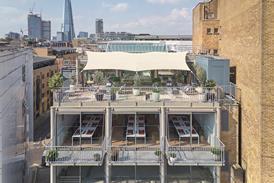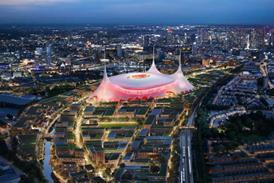- Home
- Intelligence for Architects
- Subscribe
- Jobs
- Events

2025 events calendar Explore now 
Keep up to date
Find out more
- Programmes
- CPD
- More from navigation items
Building Study: Arhus harbour baths, Denmark, by Bjarke Ingels

BIG repeats its trick of bringing swimming to the heart of the city. Could it work in London?
Urban swimming has a long, illustrious and frequently illicit history. The city of Bath earns its very name from the Roman pools built there almost two 2,000 years ago. Rome itself became so exasperated by its citizens swimming in its fountains that it banned the practice outright in the early 1700s, a prohibition that modern fines of up to €900 still fail to entirely enforce. And in London the string of modernist lidos built in the 1930s continues to form a popular municipal alternative to many Londoners’ historic, though bacterially unwise, inclination to swim in the Thames.
In 2003 Bjarke Ingels Group (BIG) and JDS Architects re-energised the lido format by designing the Copenhagen Harbour Bath. Located in the city’s hip Islands Brygge district, the facility incorporates three pools built on the edge of Copenhagen’s harbour and surrounded by “an extended hard landscape of timber ramps, decks and terraces”. It was a part of a string of harbour baths built in the Danish capital all aimed at helping bring urban regeneration to Copenhagen’s de-industrialised docks.
Highly experimental and innovative, its simple, unique selling point was “being able to go for a swim in the middle of the city”. Accordingly the facility, which operates no entrance charge, has proved hugely popular with the public.
…
This is premium content.
Only logged in subscribers have access to it.
Login or SUBSCRIBE to view this story

Existing subscriber? LOGIN
A subscription to Building Design will provide:
- Unlimited architecture news from around the UK
- Reviews of the latest buildings from all corners of the world
- Full access to all our online archives
- PLUS you will receive a digital copy of WA100 worth over £45.
Subscribe now for unlimited access.
Alternatively REGISTER for free access on selected stories and sign up for email alerts






